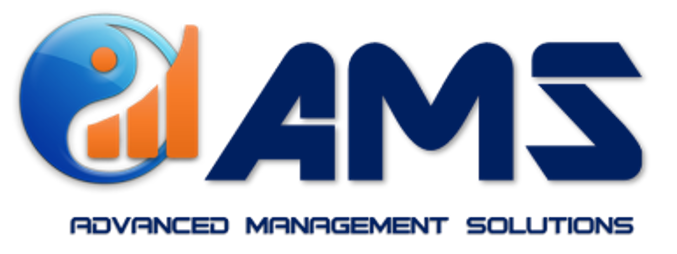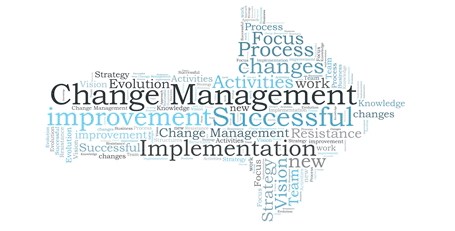Change Management Models
- Lewin’s change management model: A 3-step approach to change behavior that reflects the process of melting and reshaping an ice cube.
- ADKAR model: A people-centered approach to facilitate change at the individual level.
- Kotter’s 8-step change model: A process that uses employee’s experience to reduce resistance and accept change.
- Kubler-Ross change curve: A strategy that breaks down how people process change using the 5 stages of grief.
- McKinsey 7s model: A process centered around the alignment seven fundamental elements of any organization
- PDCA: A cyclical and iterative change management process focused on continuous improvement.
- Bridges Transition Model: A people-centered model focused on managing people’s experience transitioning to change.
While definitions vary, change management generally refers to how teams and companies implement organizational change. Often referred to as the only constant, change—and the management of it—is an ever-evolving process that affects everyone. And although there is no one right or wrong way to mitigate change, there are a few tried-and-true change management models that organizations return to again and again.
Lewin’s change management model
Developed in the 1940s, Lewin’s change management model remains relevant because of its simple yet effective structure. According to the change model’s namesake, Kurt Lewin, organizational change management can be broken down into three smaller, more manageable stages:
- Unfreeze
- Change
- Refreeze
A physicist by trade, Lewin used the example of turning a cube of ice into a cone of ice and applied it to organizational change management.

First, a team or organization must “unfreeze” their current process and perceptions when preparing for upcoming changes. This step helps the team approach the task or challenge with a clean slate without bias or bad habits.
Next, it’s time to implement changes. Effective change requires clear and constant communication across all affected channels both during and after deployment.
Finally, it’s time to “refreeze.” Assuming accurate feedback and ongoing communication occurred during the “change” step, the refreeze step locks into place the new process. Like ice molds, teams and organizations need to move away from an old mold before they can fit into a new one.
The Lewin change model, while too simplistic for some, is favored by others for its ability to uncover old patterns or overlooked problems as well as for its clean approach to new ways of thinking.
ADKAR model
The ADKAR model is popular for its people-focused approach to change management. Created by Jeffrey Hiatt, the ADKAR change model helps facilitate change on an individual level since change is often less about the changes themselves and more about people’s reactions to them. ADKAR is an acronym for:
- Awareness: Awareness of the need to change
- Desire: Desire to participate in and support the change
- Knowledge: Knowledge of how to change
- Ability: Ability to implement the change
- Reinforcement: Reinforcement to sustain the change

Since organizational change is directly dependent upon its employees for successful implementation, it’s critical for individuals to have a clear understanding of what changes are occurring, why they are occurring, and how they affect them personally. The ADKAR model helps individuals process change through clearly defined stages that enable them to both understand and accept the changes at hand.
Kotter’s 8-step change model
Developed by John Kotter after a survey of over 100 organizations in flux, the Kotter 8-step change model also focuses more on the people experiencing large organizational changes rather than the changes themselves. The eight steps are:
- Create a sense of urgency.
- Build a strong coalition.
- Form a strategic vision.
- Get everyone’s buy-in.
- Enable action by removing barriers.
- Generate short-term wins.
- Sustain acceleration.
- Institute change.
Kotter’s change management process skillfully turns possibly resistant individuals into receptive participants through trust, transparency, and teamwork. By identifying the end goal, employing everyone’s involvement, and executing the impending changes together, this process remains a long-standing favorite among change management models.

Kubler-Ross change curve
Most widely known as the five stages of grief, the Kubler-Ross change curve can also be thought of as a reliable change management strategy due to its breakdown of how people process change in general. Organizations can better prepare for change when they also anticipate the possible reactions by their workforce. The five stages are:
- Denial
- Anger
- Bargaining
- Depression
- Acceptance
If teams and companies lose sight of whom their changes impact the most, then their attempts to make those changes will be for naught. Changing an organization is not like changing a tire; there are emotional factors to consider.
One caveat to consider with this change management strategy is that these stages are not always sequential and that everyone can progress through them differently, so its effectiveness is not always predictive. As such, it can also be used to supplement other change management models for a two-fold approach.

McKinsey 7s model
The McKinsey 7s model was developed at the McKinsey consulting firm by Thomas J. Peters and Robert H. Waterman during the 1970s to evaluate how the different parts of an organization work together. According to the 7s model, there are seven fundamental elements of every organization:
Hard elements (easiest to identify and control)
- Strategy
- Structure
- System
Soft elements (more subjective and difficult to change)
- Shared values
- Staff
- Style
- Skills
These elements are interconnected, and if one element is altered, the change will ripple out and affect the other elements. Companies tend to use the 7s model when they implement changes in the organization and need to align different departments and processes.
As an example, if a company grows rapidly from 15 employees to 50 employees, the staff, shared values, and structure of the organization will probably change and are going to affect the other elements. Using the 7s model, it is possible to understand the changes and realign the elements during growth to keep everything running smoothly.

PDCA model
Also known as the Deming wheel or control cycle, the PDCA model was developed by William Deming during the 1950s. Standing for Plan-Do-Act-Change, the PDCA model is a cyclical and iterative process for continuous change and improvement.

It helps organizations make improvements by following a simple process: devise a plan, test the plan, implement the plan, evaluate the plan’s success, and make the necessary changes. Rinse and repeat.
As a powerful and versatile cycle, PDCA is best used when conducting controlled trails, finding inefficiencies, and developing new processes across businesses and industries.
Bridges Transition Model
Similar to the Kubler-Ross change curve, the Bridges Transition Model is another people-centered approach to change management. However, unlike the Kubler-Ross change curve, the Bridges Transition Model focuses on the transition to the change and people’s experience rather than the change itself.
According to the Bridges Transition Model, the key to change management isn’t the results of the change, but the way the employees let go of the old and accept the new. The Bridges Transition Model is best used during large changes to help employees through the process. There are three stages that occur when people transition to change:
- Ending, losing, and letting go: As contradictory as it seems, the first step in the transition model begins with an end and is typically the most emotional for employees. Failure to acknowledge employees’ feelings may cause them to reject the changes so it is important to clearly communicate the purpose and benefits of the change.
- Neutral zone: During this phase, employees adapt to the change and get up to speed with new processes. Communicate quickly and clearly when issues arise to avoid confusion and frustration.
- New beginnings: The last stage of the transition is acceptance. Employees have a sense of direction and understand why the changes needed to happen. Highlight the success of the changes to demonstrate the tangible results of the employees’ hard work.

Prepare for change
Change management models help organizations prepare for upcoming changes. Whether you are working on large company-wide changes or updating processes within your department, the right tools make planning for even the broadest of changes within an organization becomes possible.
Learn more about these methodologies with the resources above.
By: Lucidchart Content Team






